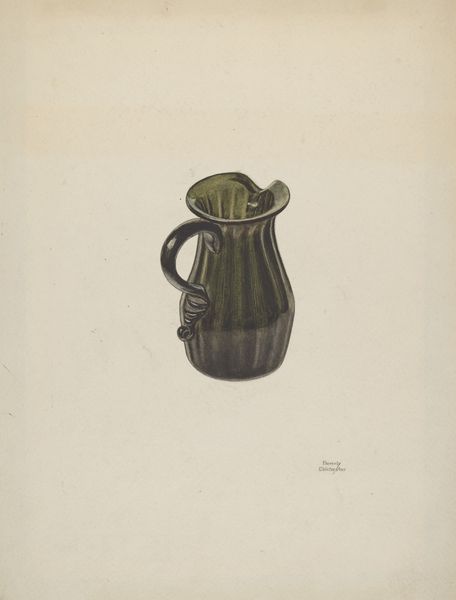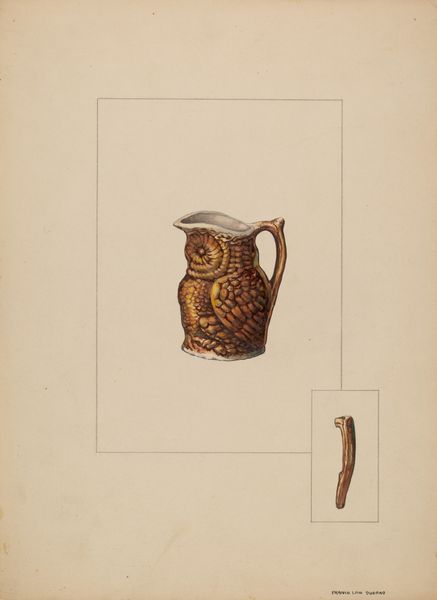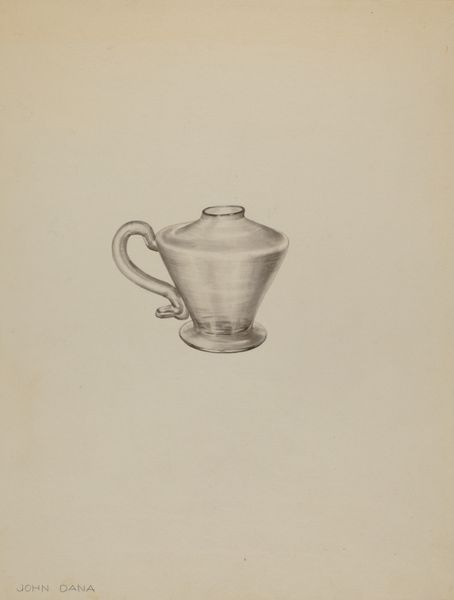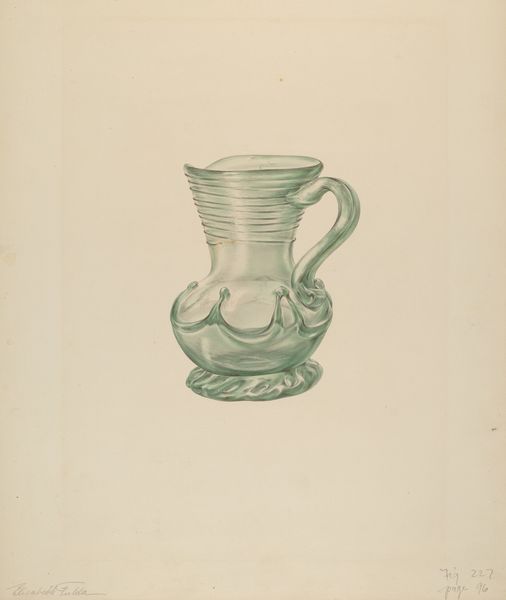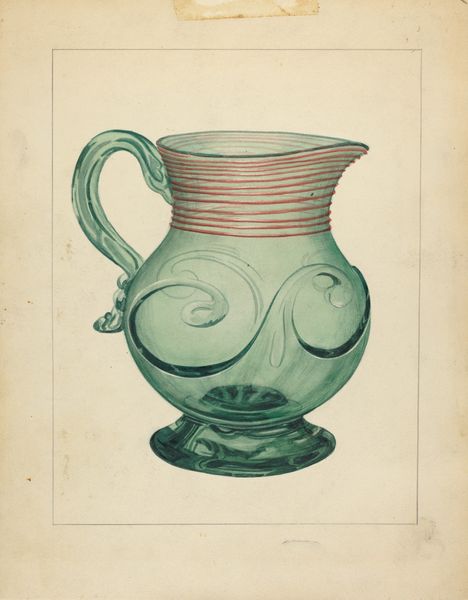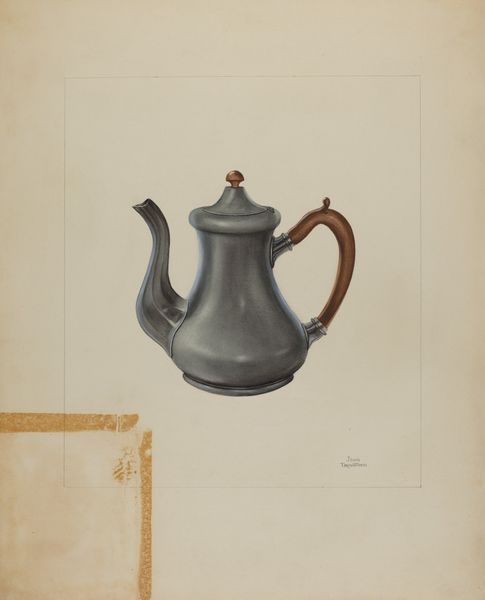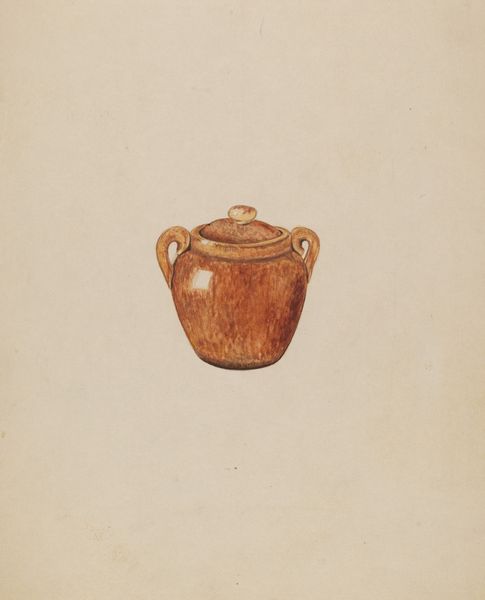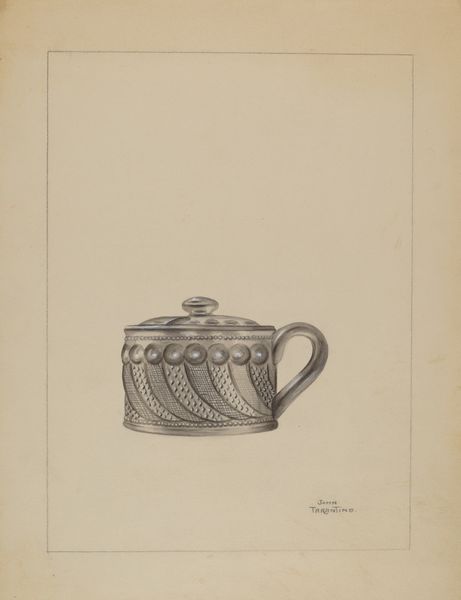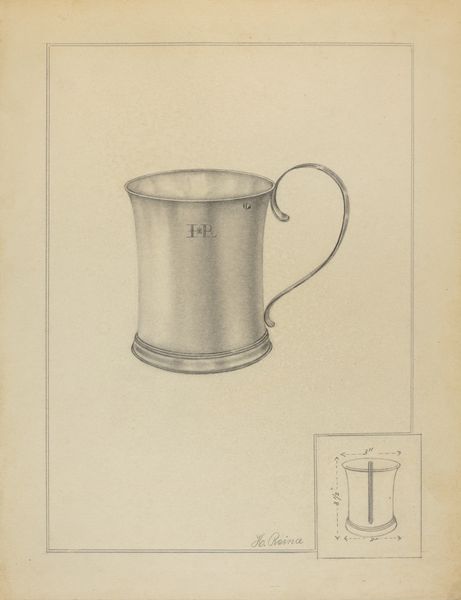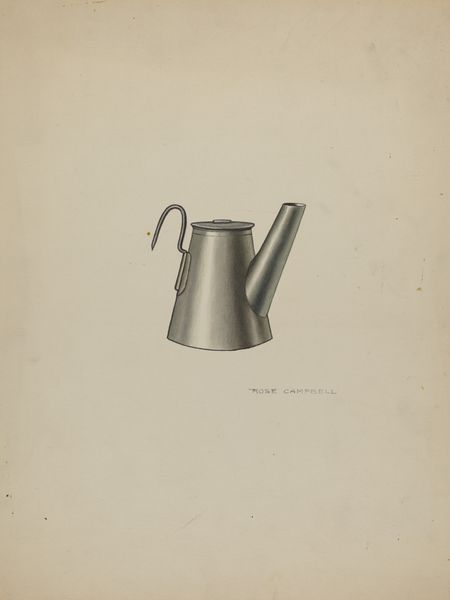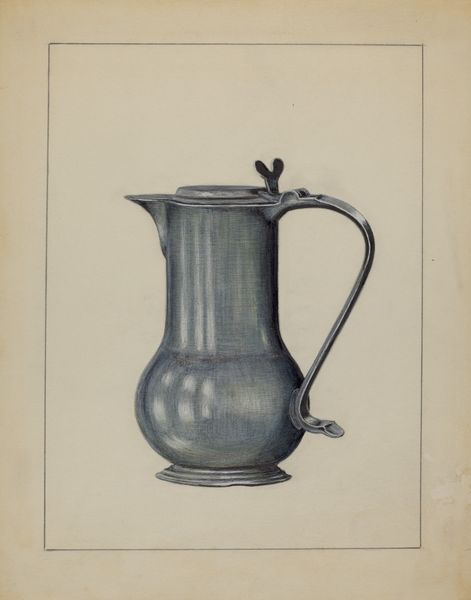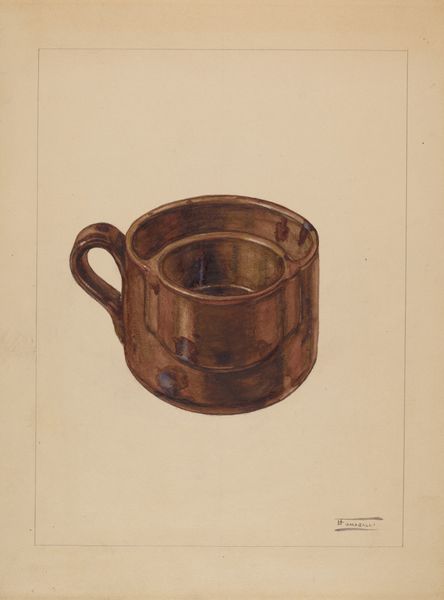
drawing, watercolor
#
drawing
#
watercolor
#
watercolour illustration
#
academic-art
#
watercolor
Dimensions: overall: 29.4 x 22.8 cm (11 9/16 x 9 in.) Original IAD Object: 2 1/2 " (High?) 1 3/8" Dia(base)
Copyright: National Gallery of Art: CC0 1.0
Curator: Today we are observing "Pitcher," a watercolor and ink drawing created around 1937 by Francis Law Durand. What’s your initial take? Editor: Well, it certainly looks like a straightforward, somewhat unremarkable, rendering. The color palette is quite muted. But look at the strategic, repetitive, almost fluted use of line across its body. There's a precision at play here. Curator: Precisely. Consider that pitchers throughout history, in various cultures, frequently held significant symbolism tied to life, sustenance, and abundance. Their curved forms evoke notions of containment and nurture. Do you sense that at all here? Editor: That connection seems, honestly, stretched here. If this was a highly decorated ewer rendered in gold leaf I might agree! But here I primarily appreciate its technical elements, specifically, the meticulous depiction of its ribbed texture and its pleasing proportional balance, rather than any feeling of abundance. Durand also includes a seemingly random extra drawing of its handle on the lower-left. Any thoughts on that? Curator: Well that compositional choice is somewhat unusual. But by isolating it in such a manner, the handle takes on significance. Think about it as the point of contact, the means by which we access what the pitcher offers – whether water or something else entirely, it allows engagement. The image of the pitcher handle as a symbolic gesture. Editor: Hmm, I’m more drawn to how the repeated vertical lines provide a formal structure. Durand meticulously manages the interplay between light and shadow using watercolor to give a distinct shape and roundness to the object, while grounding it formally. I will concede to your initial points concerning water and sustenance as its most likely that pitchers like these have that place as commonplace utilitarian vessels. Curator: Exactly. What this offers is not purely descriptive or mimetic. It presents us with a network of symbolic associations to prompt our curiosity and deeper meditation about its implications and the human rituals that the object supported in daily life. Editor: Yes, through the object’s shape and composition and Durand’s rendering, a very everyday item does present us with unexpected layers and connections that one would certainly miss at a casual glance. Curator: Ultimately, both the structure and its cultural resonance merge here to offer, I think, a valuable glimpse into artmaking as well as domestic and social practices of that era.
Comments
No comments
Be the first to comment and join the conversation on the ultimate creative platform.
